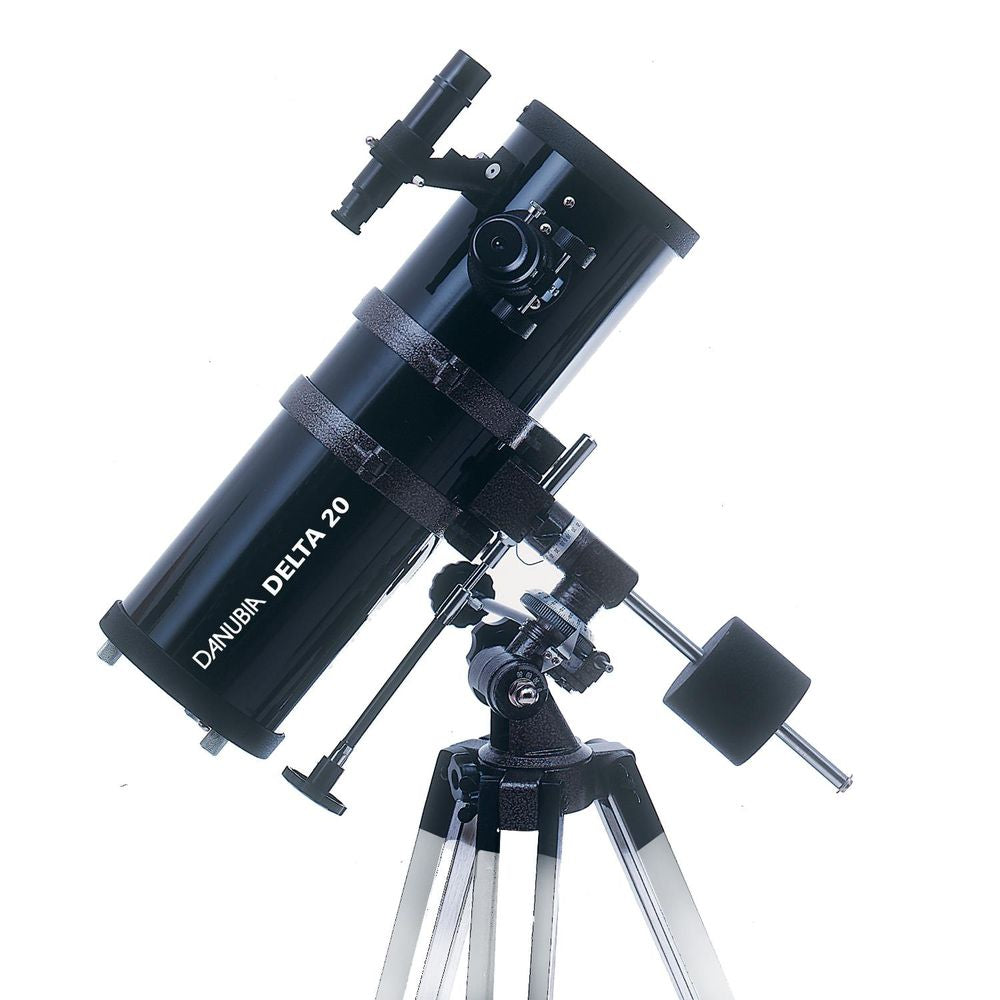
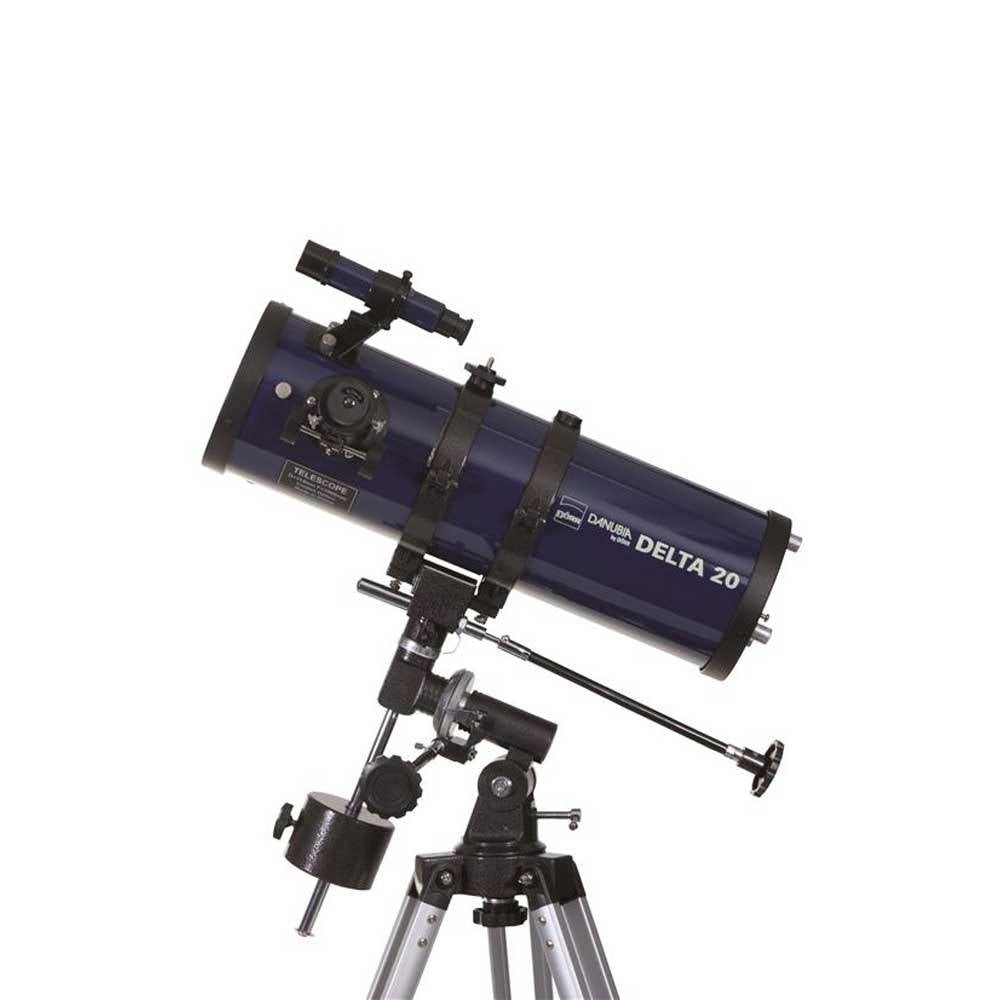

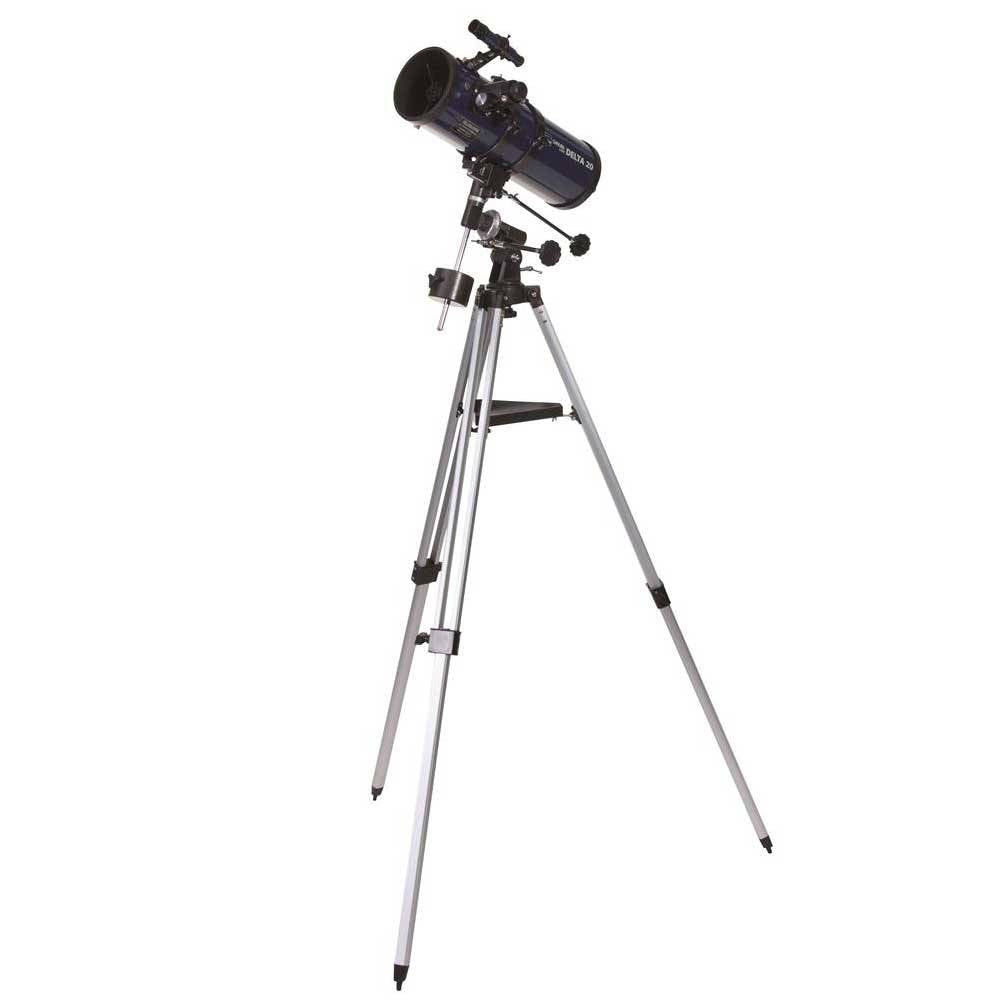
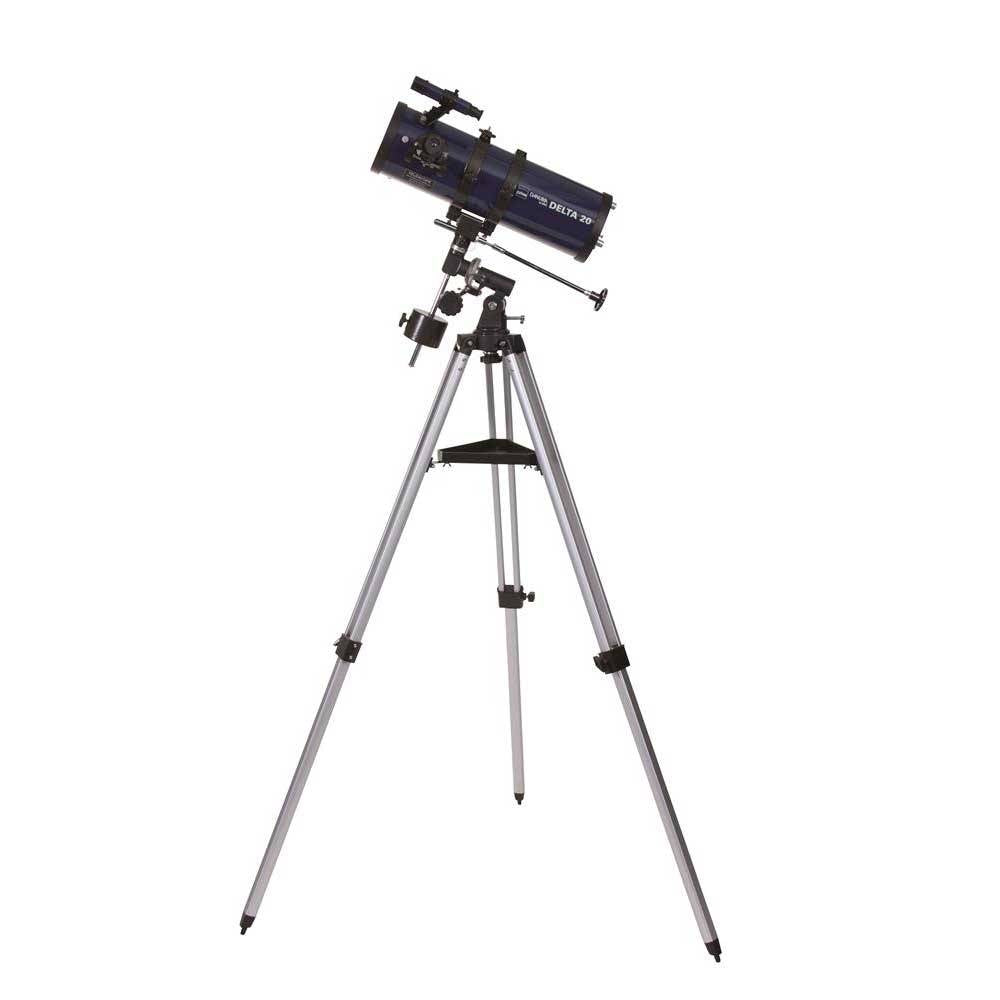
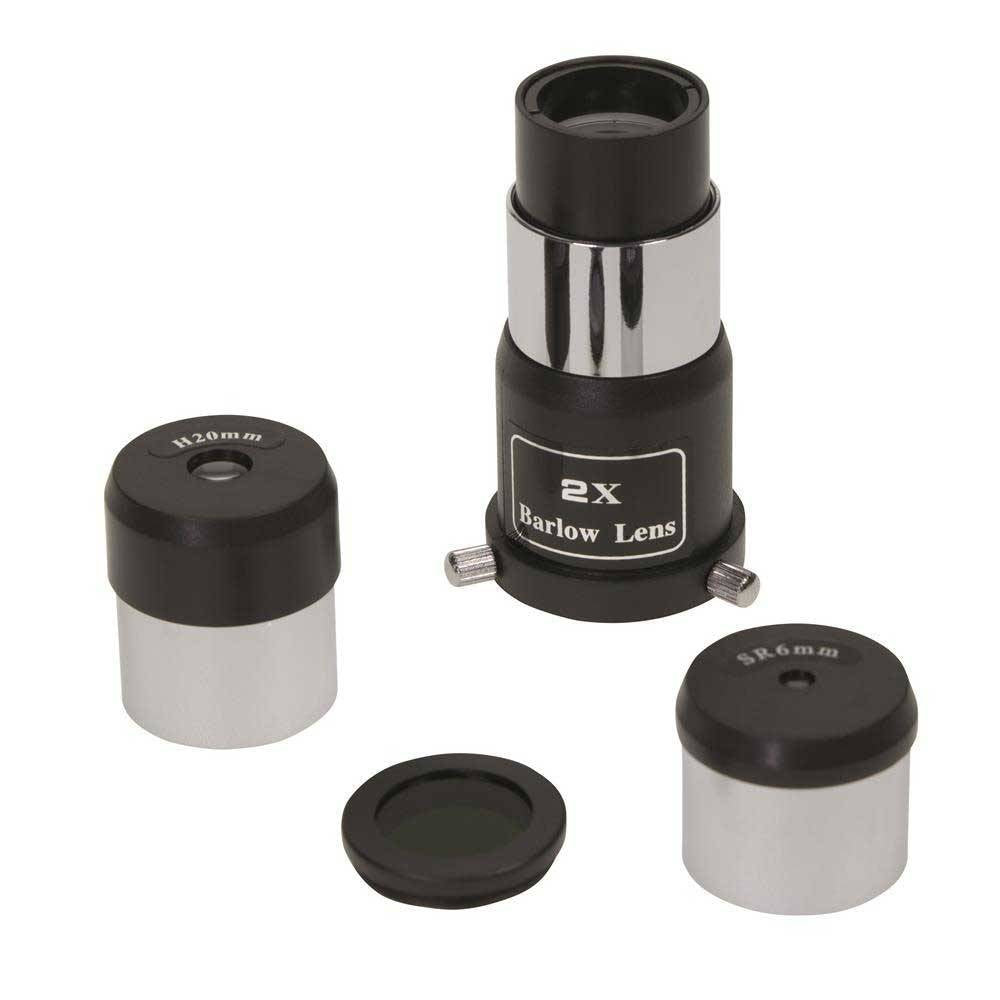
The Delta 20 Telescope is an extremely compact mirror astro telescope, so is great for leaving set up in the corner of an attic room or even in a spare corner of the lounge. The catadioptric optical system is the most versatile in the telescope range and is where the refraction and reflection techniques are combined with curved mirrors and lenses. This helps to keep the physical size of the telescope relatively small, whilst still giving all the advantages of a longer barrel. The Danubia Delta, is a very competitively priced telescope in relation to the performance and has an aluminium tripod for mounting the telescope onto. The telescope's focal length is high at 1000mm with a maximum magnification of 332x. and the large objective lens allows a greater imput of light, which means that finer detail can be seen on planets and within nebulae. It has two eyepieces that can be used, the F6mm which gives a magnification of 166x and the Huygen H20mm which magnifies to 50x. Both the eyepieces are easy to use and you can switch between the two depending on atmospheric conditions and what is showing in the night sky.
"The telescope's focal length is high at 1000mm with a maximum magnification of 332x."
The telescope has an EQ-1 equatorial mount which works on two axis, one with North South adjustments and one with East West. Using the mount is easy and allows stars to be followed across the night sky and the counterweights and flexible shafts help with very fine adjustments. The focal length can be increased with the use of additional eyepieces (Not Included) and there is a 2 Year Warranty included. With the Delta 20 telescope, you would expect to see lunar features approximately 2 miles across, dark surface features on Mars, Jupiter's cloud belts and cloud belts on Saturn's rings, as long as the atmospheric conditions are favourable. Usually, the visible image through the telescope eyepiece, is upside down, which generally isn't an issue, but if an image is needed the correct way, then erecting prisms are available, which will do this (sold separately).






